What Was Life Really Like in Roman Britain?
From the mists of Hadrian’s Wall to the mosaics of Sussex villas, Roman Britain was never just a distant outpost—it was a living frontier where empire met island, and where families, soldiers, and traders forged a shared world from stone, soil, and memory.
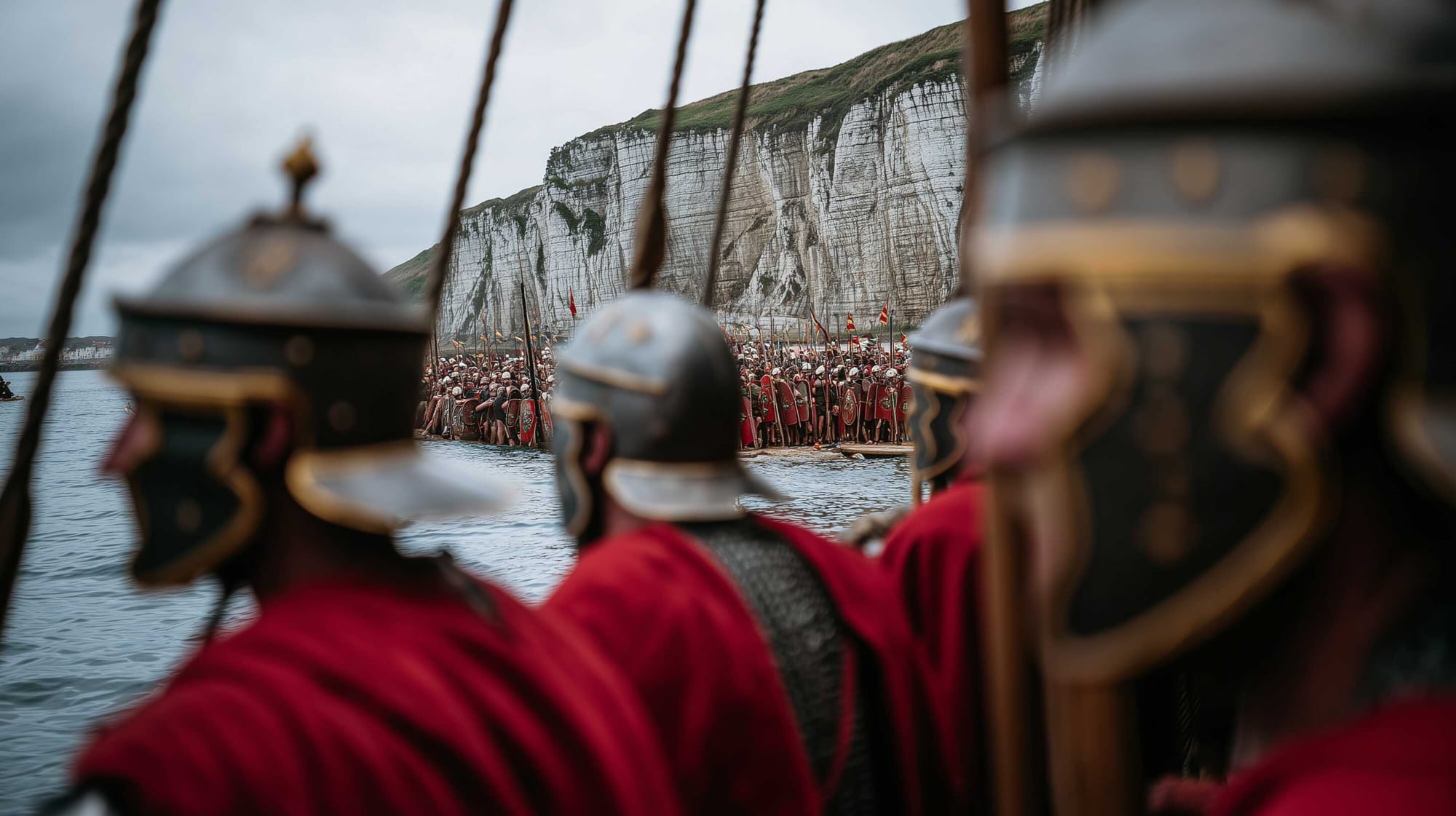
When the legions of Rome marched into Britain in 43 CE, they brought more than swords and standards — they brought a way of life. From the misty frontiers of Hadrian’s Wall to the Romanized villas of the south, life in Roman Britain was a complex blend of imperial order and local tradition.
Soldiers drilled in distant garrisons, merchants traded exotic wares in bustling towns, and native Britons adapted — sometimes reluctantly — to bathhouses, forums, and the Pax Romana. Yet even as mosaics brightened villa floors and Latin names appeared in local inscriptions, the island remained a frontier: rugged, rain-swept, and never quite tamed.
Rome in the Landscape: Traces of Empire in Britain’s Towns and Roads
For nearly four centuries — from the first century to the early fifth — the provinces now known as England and Wales, along with parts of southern Scotland, stood under Roman rule. The imprint of that era remains vivid even today: ancient roadways, city grids, and place names continue to shape the geography and urban character of modern Britain.
Cities like London, York, Leicester, and Exeter trace their origins to Roman foundations. In some, remnants of Roman-era layouts persist, while others still echo Latin naming conventions. Roads that once carried legions and merchants now guide commuters and travelers, revealing how the infrastructure of empire endures across time.
This legacy connects modern Britons with the lives of those who inhabited the province of Britannia — from townspeople and soldiers to merchants and local elites. Roman Britain’s influence extended well beyond architecture or roads; it also helped set the stage for later developments in British identity, culture, and governance.
Importantly, very few of the people who lived in Roman Britain would have been “Romans” in the narrow geographic sense. Roman identity was not confined to those from the city of Rome — much like modern national identities that are built on law, language, and shared culture rather than ancestry alone.
Being “Roman” in Britain was often a matter of citizenship, military service, or participation in a broader cultural world.
Some arrived by choice, others by force; many were born into families that had long lived in Britain before the Roman conquest ever began. These diverse origins produced a complex social landscape where Roman and local traditions intersected.
The Roman conquest began formally in AD 43 under Emperor Claudius. But to understand how Roman rule reshaped Britain, it is equally important to consider what life was like both before the conquest and after Rome’s withdrawal.
The historical record offers only scattered voices from this period, and much of what is known comes through the interpretation of archaeological evidence. Different people — whether free or enslaved, wealthy or poor, men or women — experienced Roman Britain in profoundly different ways, shaped by personal status, local context, and social roles.
Reconstructing these lives requires imagination grounded in scholarship. Though the specific stories are gone, traces of housing, foodways, religion, and infrastructure reveal how the people of Roman Britain lived and how those lives were shaped by empire. Every interpretation of this past must wrestle with gaps in the record and changing understandings, but through the fragments left behind, it is possible to catch glimpses of a world both distant and deeply entangled with the present.
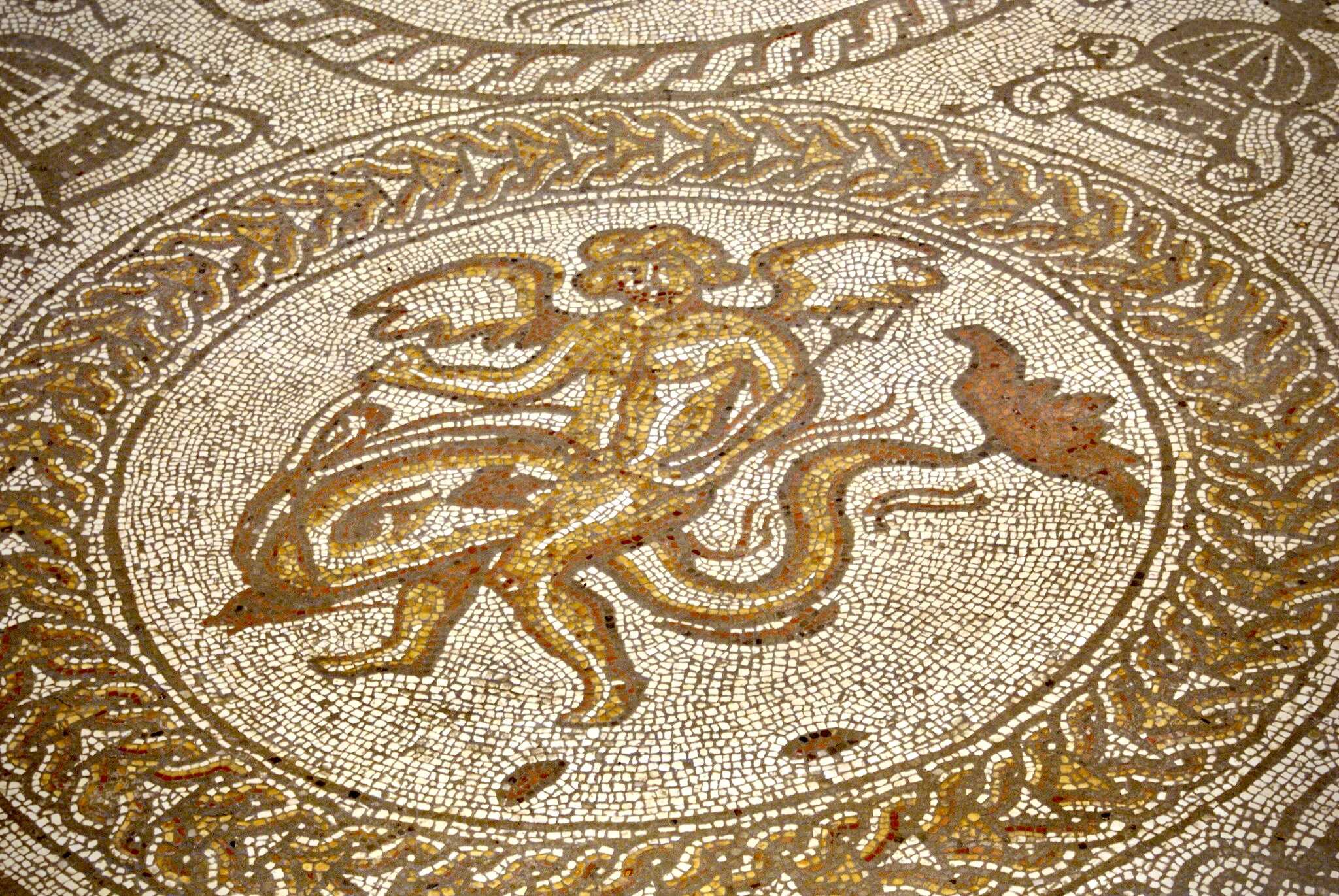
Traces in the Earth: How we know what we know about Roman Britain
Much of what is known about life in Roman Britain comes from the fragmentary echoes left behind — texts copied through the centuries, inscriptions carved into stone or metal, and rare wooden tablets miraculously preserved in the soil. While a handful of complete documents survive in later manuscripts, the majority of written evidence has come down in archaeological form.
Most inscriptions date to the early phases of Roman rule and are linked to military, administrative, or religious functions. The use of wood and wax tablets was widespread, but they are rarely found due to the damp soil conditions — with the remarkable exception of sites like Vindolanda, near Hadrian’s Wall, where anaerobic preservation has allowed some to survive.
The archaeological record is continually expanding. Excavations across Britain frequently yield new discoveries, but archaeologists also rely on techniques that reveal the past without breaking the surface. Earthwork surveys, which identify landscape features through subtle topographical changes, and geophysical scans, which detect buried structures through shifts in soil composition, are essential tools.
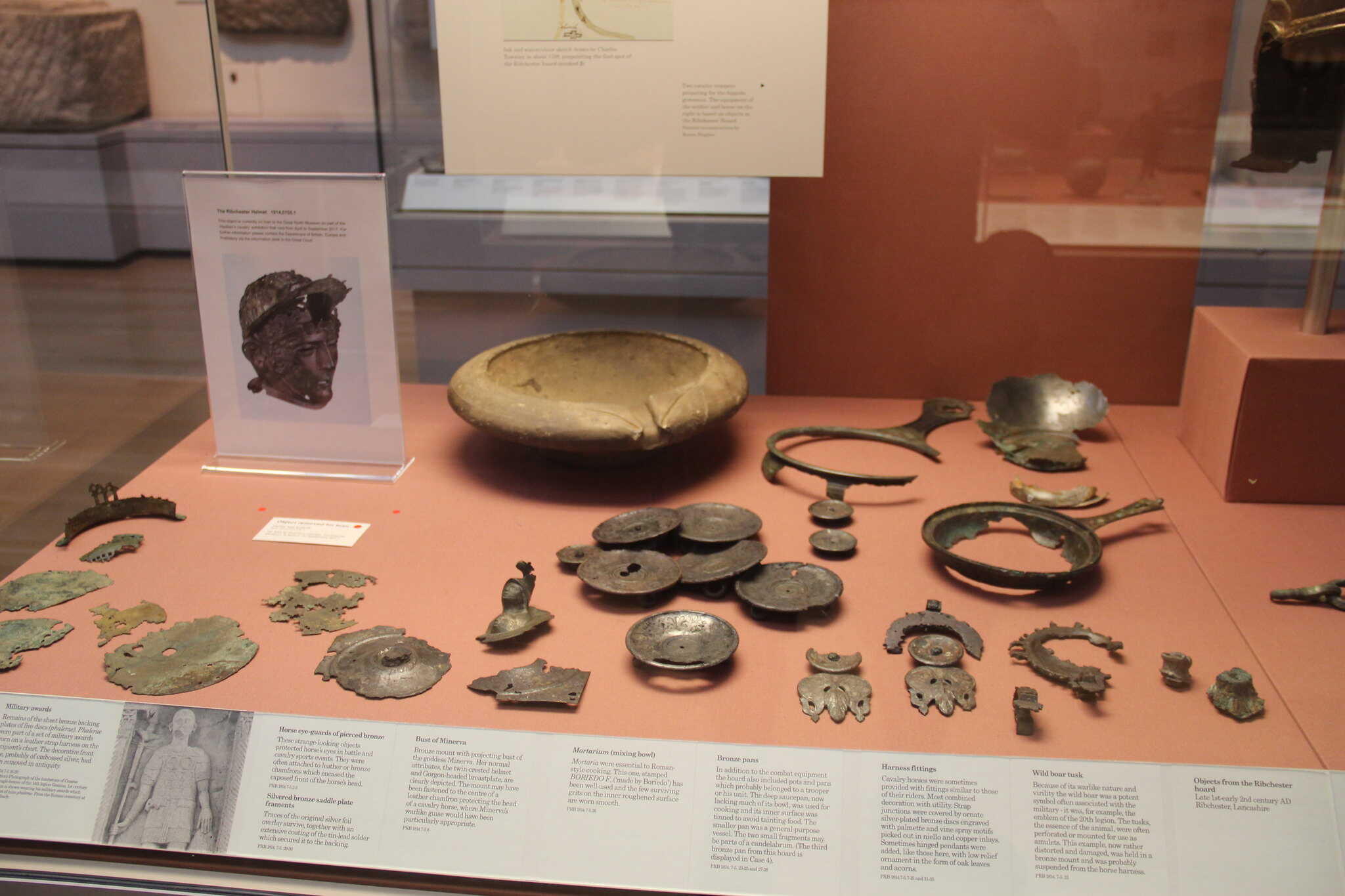
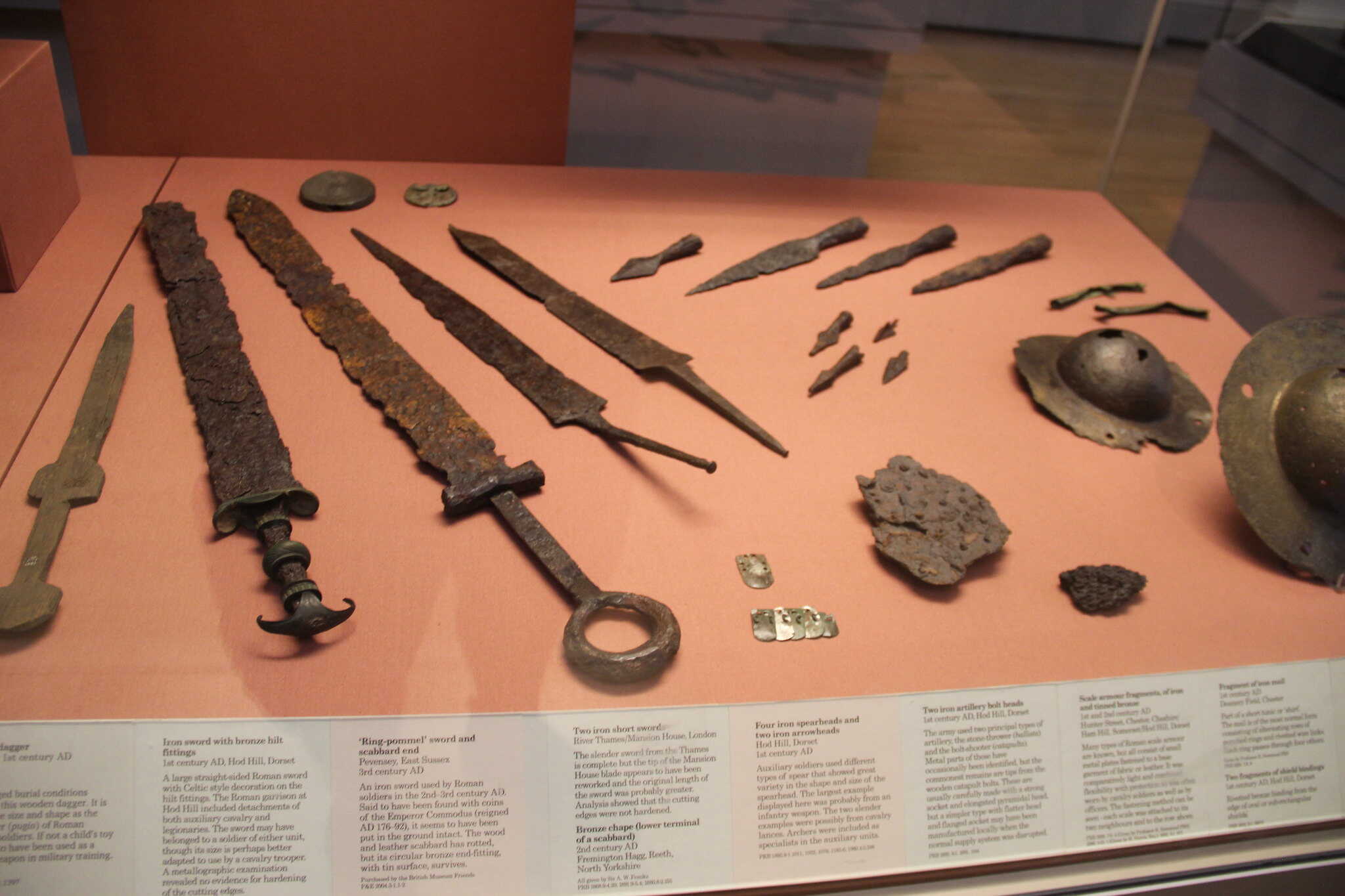
Image #2: Iron Swords & Spearheads found in Roman Britain. Credits: Gary Todd, Public domain
Aerial photography adds another dimension, highlighting hidden patterns in fields — often caused by ancient buildings affecting crop growth. Field-walking, where pottery and objects are gathered from ploughed land, also helps piece together settlement histories.
Insights into daily life — especially in terms of farming, diet, and the environment — come from organic remains recovered from both archaeological sites and natural landscapes. Pollen trapped in ancient wetlands reconstructs lost woodlands and pastures, while charred seeds hint at crops once cultivated and consumed.
Animal bones reveal not just dietary habits but also the use of animals in agriculture and transport. Oxen pulling ploughs, pigs raised for food, and horses employed in cavalry and commerce all leave their mark in the soil.
Scientific techniques add another layer. By analyzing the clay of a broken pot or the stone of a tool, researchers can determine where objects were made and how far they traveled. The story of Roman Britain is told not in a single voice, but through a patchwork of disciplines. From trade and transport to burial rites and belief systems, the scattered data coalesce into a rich portrait — one that speaks to the rhythms, labors, and beliefs of those who lived in a province at the edge of empire.
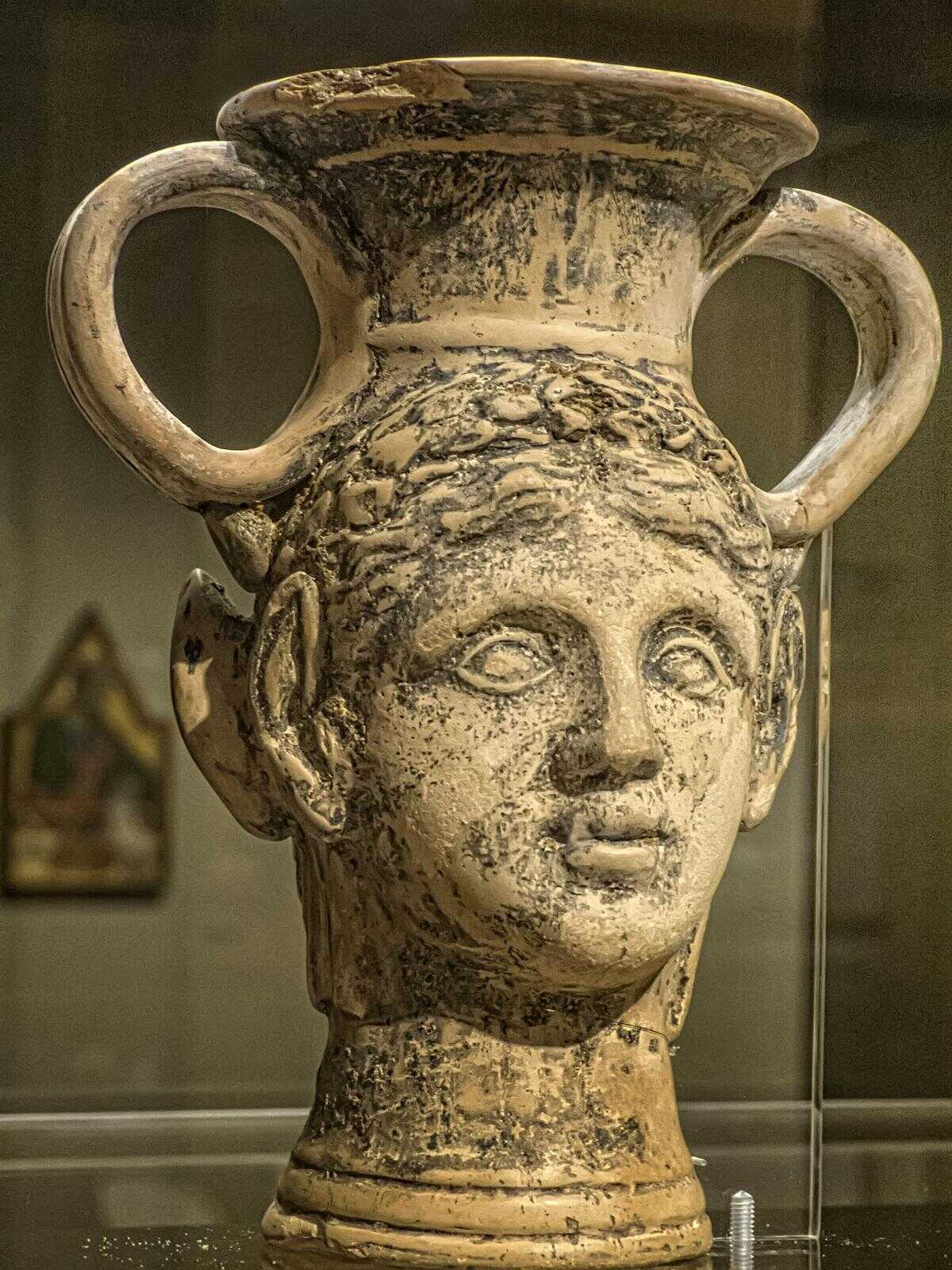
Before the Legions: Life in Britain Before the Roman Conquest
While Julius Caesar made two brief and ambitious forays into Britain in 55 and 54 BCE during his campaigns in Gaul, it wasn’t until nearly a century later, under Emperor Claudius in 43 CE, that the Roman conquest began in earnest. This military campaign unfolded over decades, encountering fierce resistance from some of Britain’s native peoples — notably the Durotriges in the southwest and the Iceni in the east.
Yet not all greeted the legions with hostility. Certain eastern tribal leaders, already entwined in diplomatic ties with Rome, may have welcomed the imperial arrival. The lavish villa at Fishbourne in Sussex, likely built for the pro-Roman king Togidubnus, hints at such early collaboration.
The people the Romans encountered were not strangers to civilization. Britain during the late Iron Age was far from primitive. Though no native histories were written, material and environmental evidence paints a vivid picture.
These communities had long farmed the land, cleared forests, and built networks of settlements. Agricultural methods, tested today at places like Butser Ancient Farm, show that Iron Age Britons produced abundant grain and animal products — enough to support social hierarchies that included warrior elites, craftspeople, and religious figures.
Most people lived in family-run farmsteads composed of roundhouses, built from timber or stone, often enclosed by earthen banks and fences. These homes, smoky and dim inside, clustered across the countryside in large numbers, suggesting a thriving population.
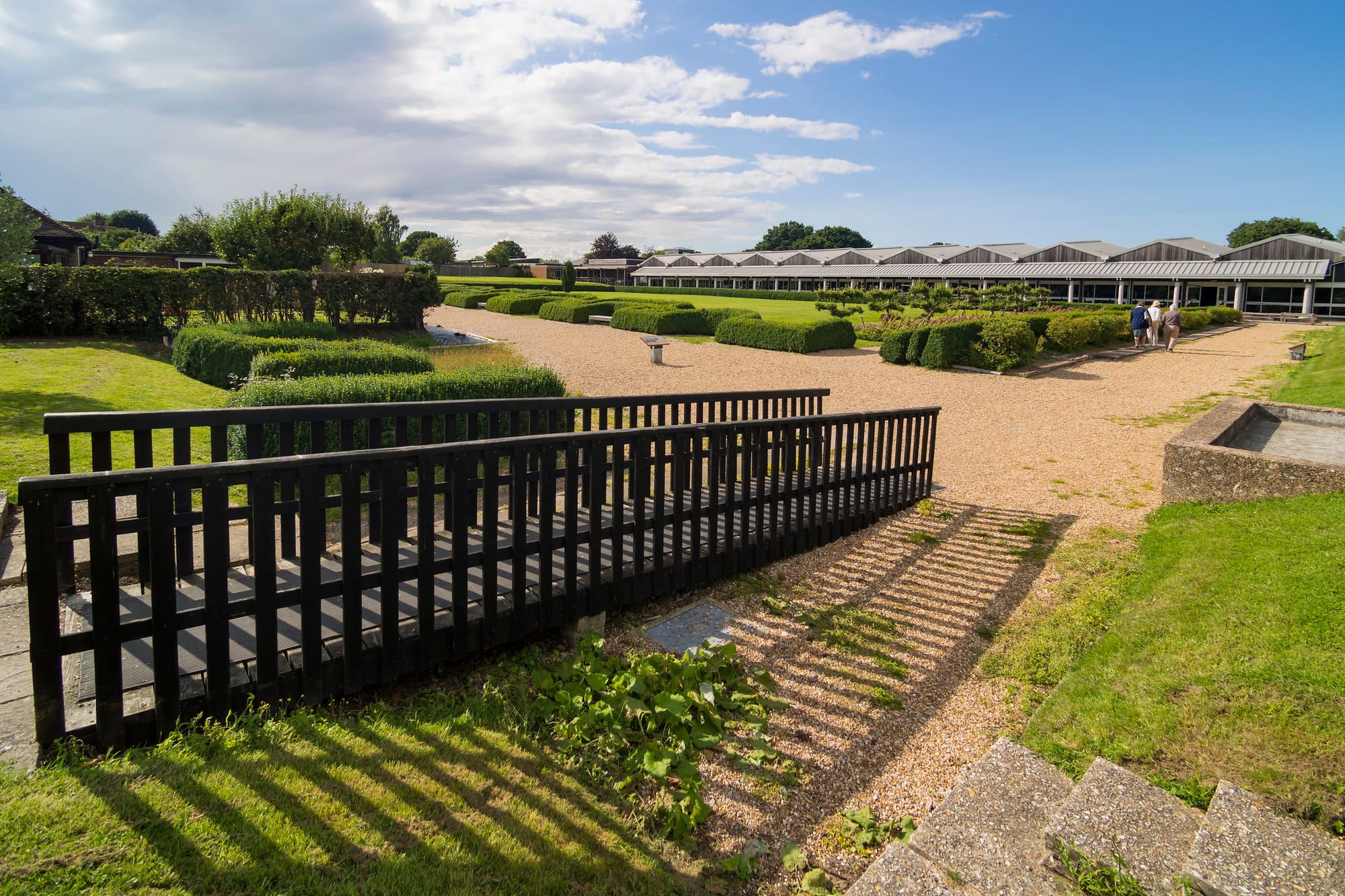
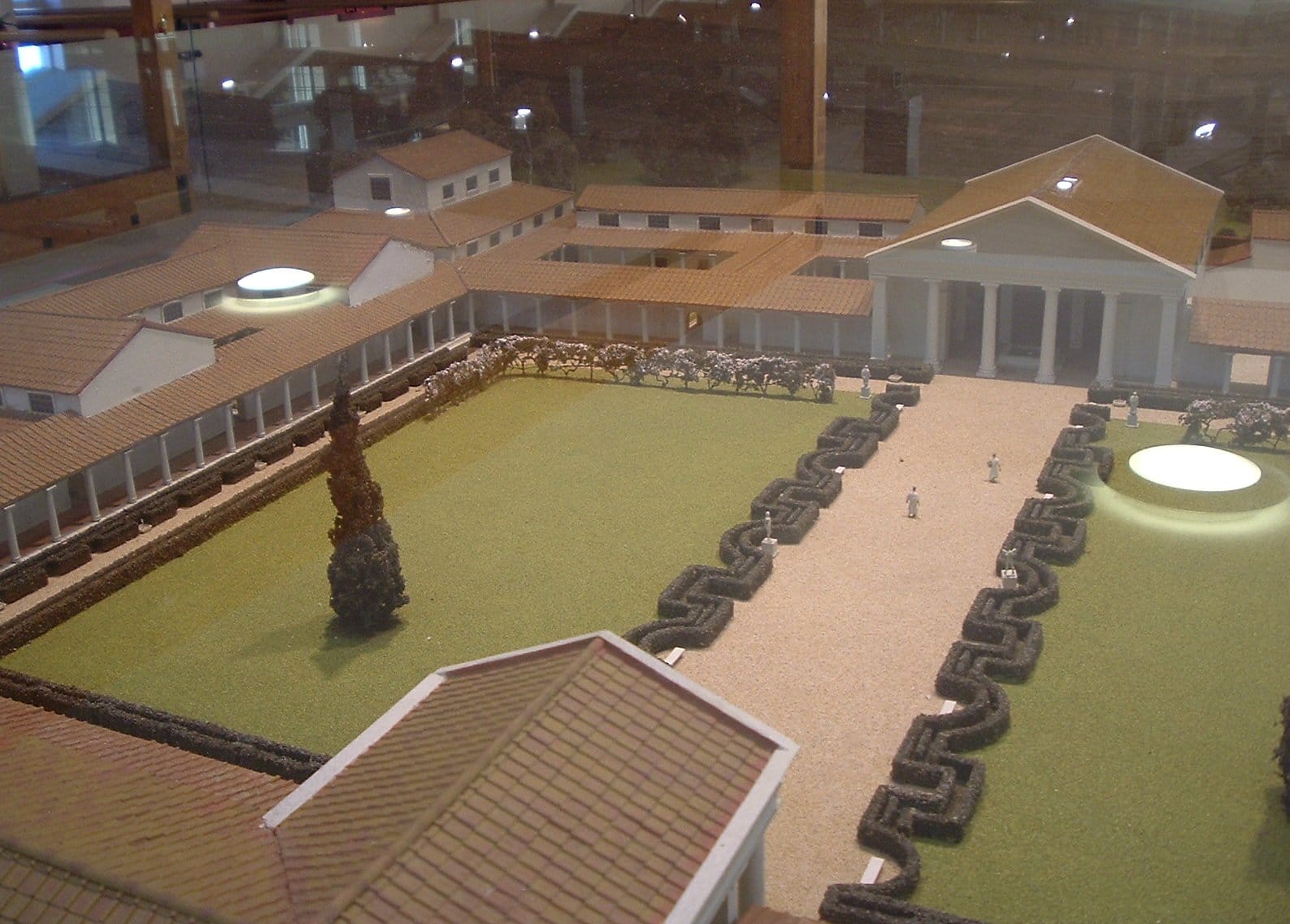
Image #2: A Model of the Fishbourne Roman Palace. Credits: John W. Schulze, CC BY 2.0
e daily tools and clothing were likely made from wood, leather, and wool, archaeological finds reveal sophisticated metalworking in iron, bronze, and gold. Luxury items such as enamelled ornaments and torcs speak to both wealth and craftsmanship.
Trade was active, even if coins weren’t yet in widespread use. Exchange was largely based on gifts and services, though some tribal leaders minted high-value coins — more symbolic than practical — which bore their names and hinted at political organization. Imported Roman wine, grave goods, and coastal trade hubs like Hengistbury Head reveal a Britain already engaged with the Mediterranean world.
Iron Age society was organized into kingdoms, each ruled from strongholds such as large enclosures (oppida) or fortified hillforts. These centers housed leaders, supported ritual activity, and sometimes hosted markets or minting operations. Their defenses, often timber palisades atop earthen walls, suggest a society familiar with conflict. Warriors fought with swords, spears, slings, and shields. Some aristocrats donned chainmail and helmets, while others likely fought with little more than a spear.
When the Romans came, the Britons’ style of warfare — centered on individual valor — was no match for Rome’s tactical discipline and crushing force. Even so, their resistance was notable in an imperial context. Religion remains more elusive, though offerings in bogs and lakes, the prominence of hilltops and groves, and finds like the well-preserved body of Lindow Man suggest ritual sacrifice — perhaps even of humans.
While Britain had long interacted with Roman traders and influences, it remained a land of its own — without towns, bureaucracy, widespread literacy, or a monetary economy. The conquest changed that world forever. (Life in Roman Britain, by Ken and Petra Dark)
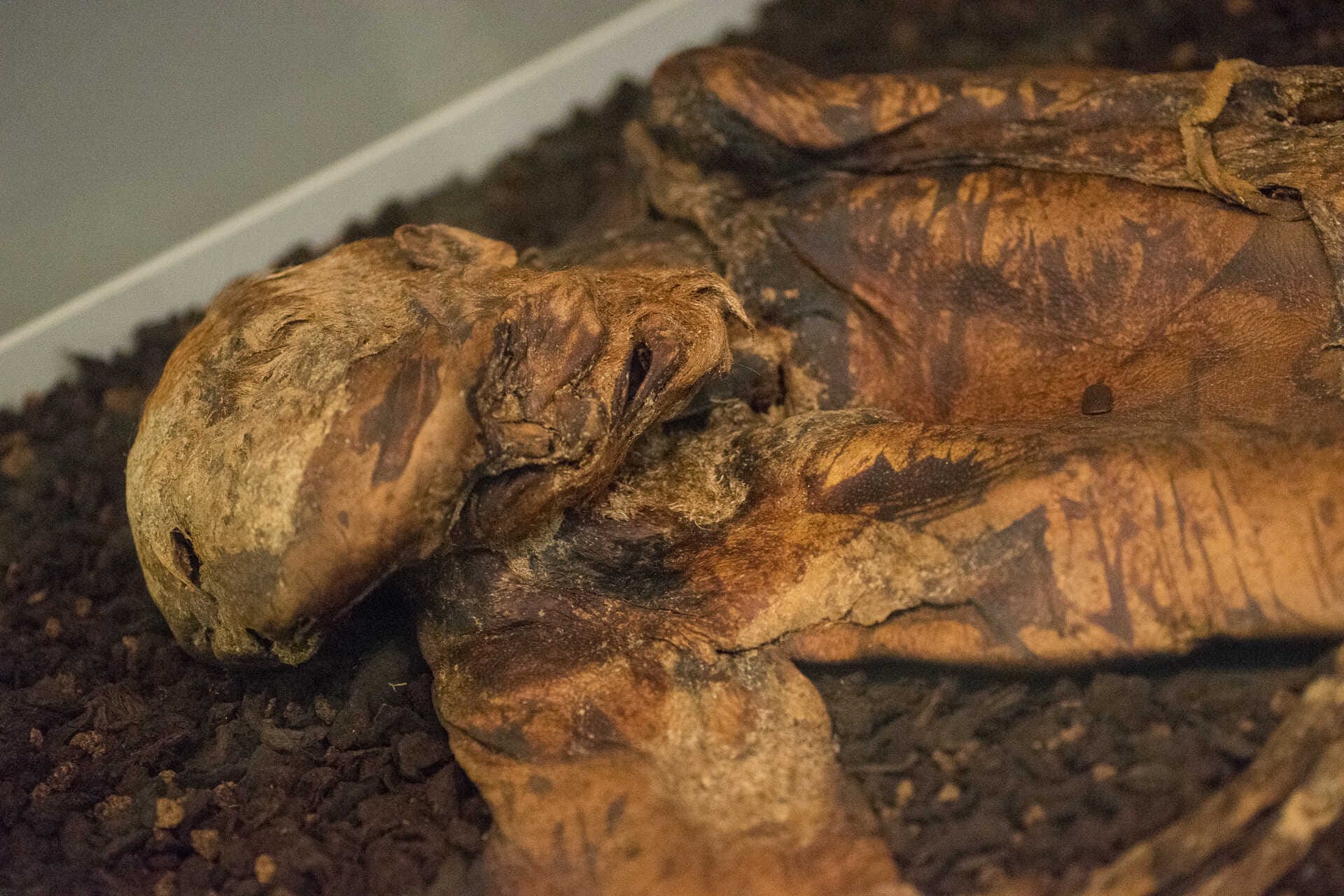
Caesar’s Footsteps: Britain Between Myth and Strategy
In the closing decades of the Roman Republic, Julius Caesar’s expeditions to Britain in 55 and 54 BCE were less about conquest and more about political ambition and precedent. Though military gains were limited and never consolidated, these campaigns placed Britain—until then a mysterious land beyond the known world—firmly on the Roman map.
The island’s remoteness gave it an enduring symbolic power in Roman imagination, used for imperial propaganda and even exile. Caesar’s encounters with British kings and his installation of client rulers laid the groundwork for future claims of Roman overlordship.
In the decades following Caesar, internal Roman conflicts stalled further action in Britain. Yet links between southeastern Britain and Belgic Gaul grew stronger, with elites on both sides maintaining trade and shared culture. The Romans increasingly employed a strategy of indirect control, relying on allied "client kingdoms" rather than full military occupation. British society, especially in the south, began to show signs of Roman cultural influence—metalworking, land division, settlement patterns—though this did not always align with political allegiance.
Despite several planned invasions, Augustus chose diplomacy over force, content to let Roman influence expand through commerce and political relationships. Archaeological evidence shows Britain was exporting grain, cattle, iron, and luxury goods, becoming economically important to the Empire even before conquest. The balance between Roman non-intervention and British autonomy benefited both sides, especially powerful leaders like Cunobelinus, who controlled key trade routes and expanded his dominion without provoking Rome.
By the early first century CE, Roman cultural penetration was deep, but it remained entangled with native power politics. Britain, still officially outside the Empire, was already being shaped by the gravitational pull of Roman wealth, prestige, and strategic interest. Caesar had opened the door, and generations of emperors would keep their eyes on the island across the Channel.
From Conquest to Province: The Roman Order takes Root in Britain
By AD 47, Roman control in Britain extended to the Severn and Trent, and the process of transforming the territory into a formal province was underway. Britain’s governorship became a prestigious appointment, reserved for former consuls and entrusted with commanding multiple legions.
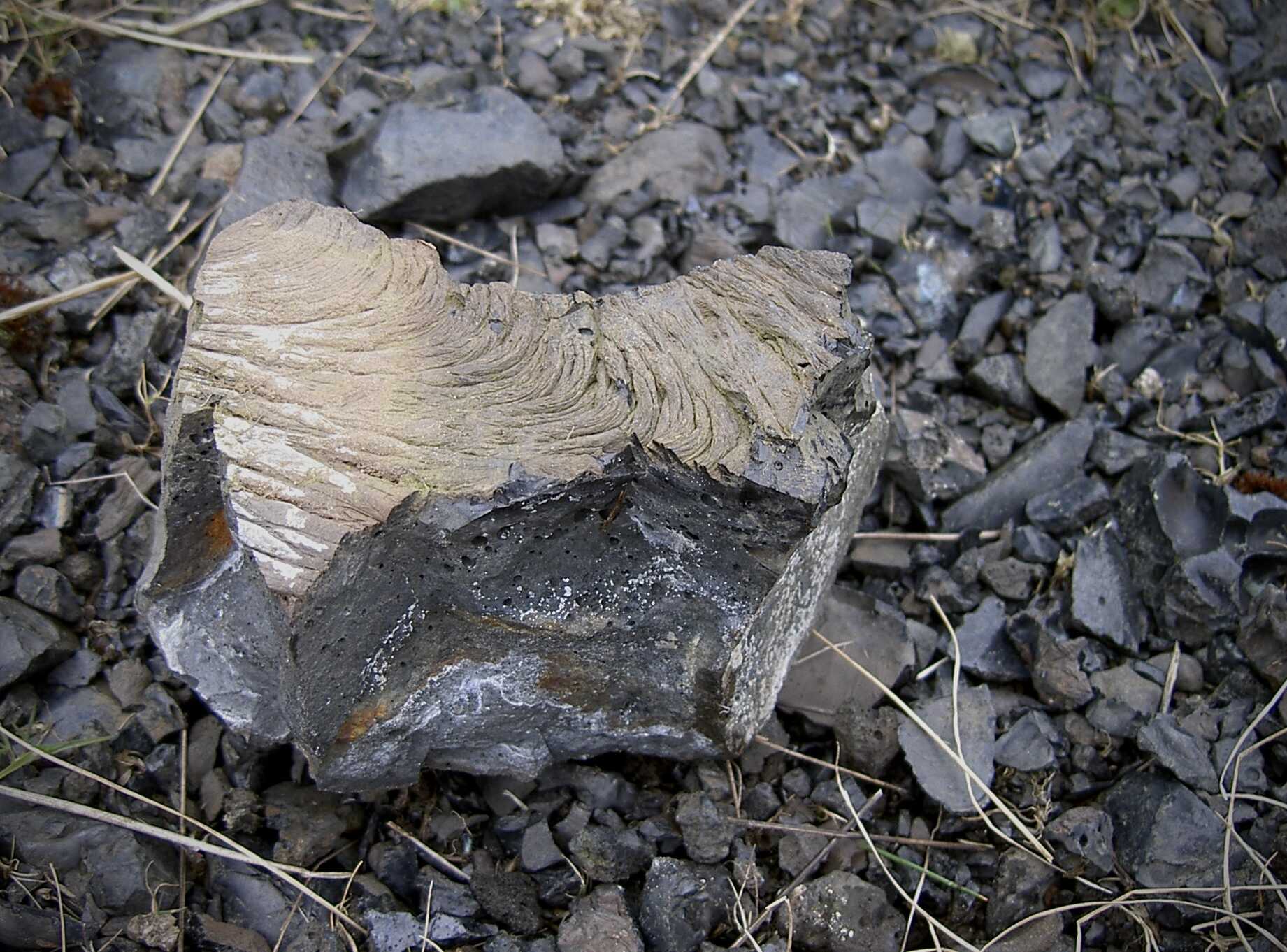
The island, prized for its mineral wealth—such as the state-controlled silver-bearing lead mines in the Mendips—was seen as both a strategic and economic asset.
A remnant of Ancient Roman lead workings in Roman Britain. Credits: Neil Owen, CC BY-SA 2.0
Rome initially hoped to administer the province efficiently by installing loyal local rulers. Client kings like Cogidubnus and allies such as Cartimandua of the Brigantes helped maintain stability without the need for direct occupation. These arrangements allowed the Roman governor to manage much of the province through reorganized tribal structures (civitates), where native elites took on administrative roles in a Romanized local government system.
However, efforts to extend Roman law and military order—such as disarming the population—sparked resistance. The Iceni rebellion revealed the limits of nominal independence. In response, Rome fortified its presence: Colchester became the center of the Imperial Cult and was resettled with retired soldiers, while London (Londinium) was likely founded as a planned commercial and administrative hub.
Strategically located on the Thames and connected by new Roman roads, London quickly emerged as the province’s business and logistical heart. These developments set the stage for deeper integration and expansion of Roman Britain beyond its original southern foothold. (Roman Britain. A very short introduction, by Peter Salway)
Ties That Bound: Family Life in Roman Britain
The structure of family life in Roman Britain was as complex as the empire itself—an interwoven web of traditions, migrations, military regulations, and social change. Before the Roman conquest, most Britons lived in extended family groups in rural, self-sufficient settlements.
While this tradition persisted in some regions well into the Roman period, the growth of towns and military zones prompted a shift toward nuclear families and more fluid, multicultural households. The arrival of Roman soldiers, merchants, and administrators introduced new dynamics. In both forts and civilian settlements, evidence reveals mixed-ethnicity families, adopted dependents, and intricate kinship networks.
Inscriptions tell of widowed mothers, sisters, and nieces accompanying soldiers; centurions marrying across provincial lines; and children navigating multilingual, multicultural homes. These families often faced tensions stemming from language, religion, and differing legal norms—such as the Roman preference for monogamy and patrilineal inheritance, contrasted with customs from polygamous or tribal societies.
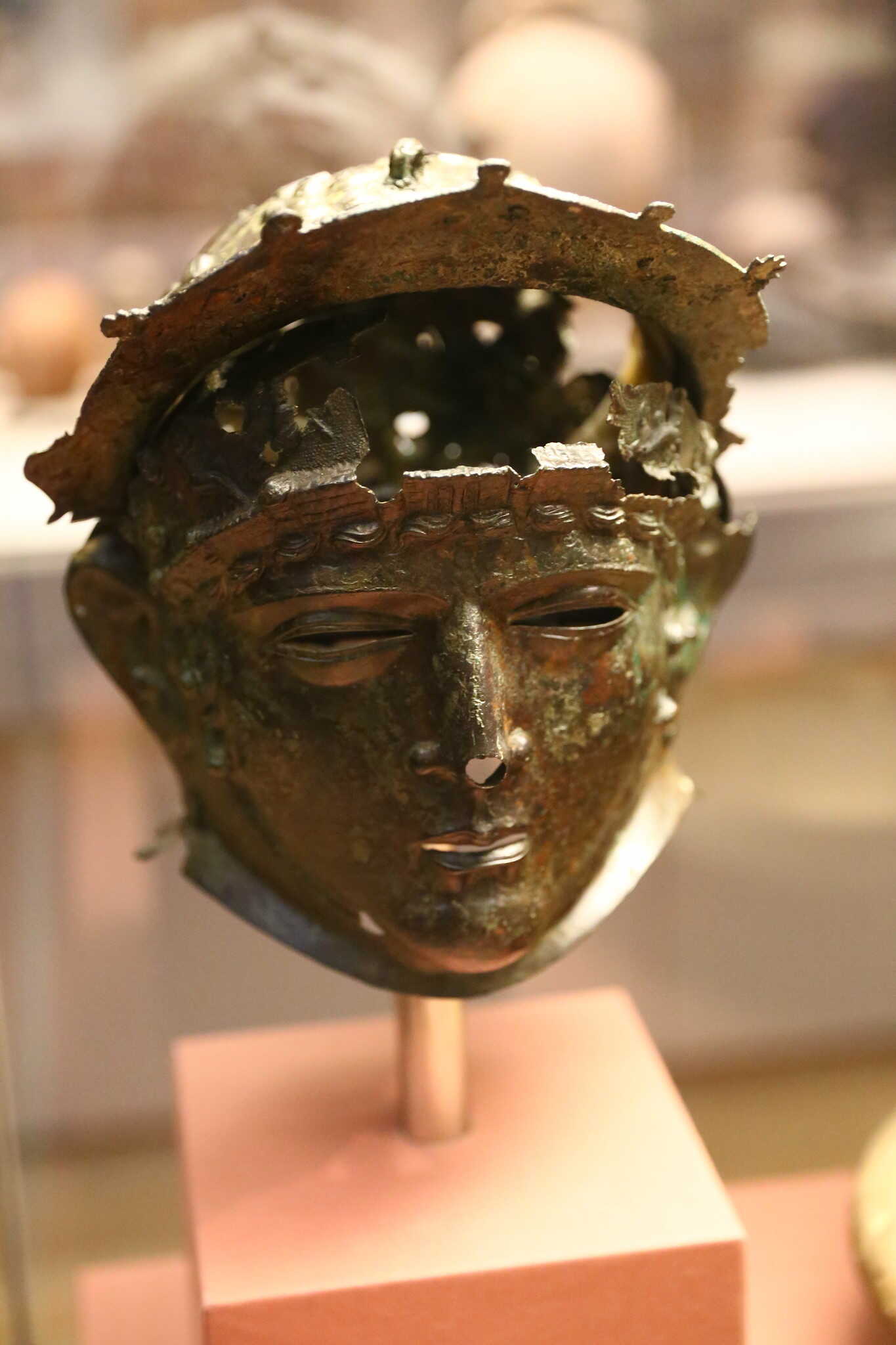
Children in Roman Britain were raised in a variety of familial contexts: legitimate offspring of Roman citizens, fostered or adopted children (often freed slaves), or those born outside legal wedlock to serving soldiers—who, until AD 197, were barred from formal marriage. Although the legal system increasingly accommodated these familial realities, the status of children and women often depended on social class, ethnic origin, and the presence of written wills or citizenship grants.
Family planning was evidently common, as indicated by the small average family size and the wide use of contraceptives, abortion methods, and—less commonly—infanticide, which Roman law treated pragmatically rather than morally. Tombstones and dedications across Roman Britain reflect a spectrum of emotional expression within families. Some inscriptions record deep grief over the loss of children and spouses, while others are more formal or administrative.
The presence of affectionate epithets, long marriages, and shared tombs among freedmen, merchants, military personnel, and their families reveals a society where familial ties—both biological and chosen—were central to identity and daily life. Despite the disruptions of war, military postings, and imperial policies, the concept of the family remained a foundational unit in Roman Britain. It included not only kin by blood or marriage, but also slaves, freed people, clients, and colleagues.
In a world of cultural convergence and personal mobility, family—however defined—offered a sense of stability, obligation, and belonging. ("The family in Roman Britain", by Lindsay Allason-James, in "A Companion to Roman Britain", edited by Malcolm Todd)
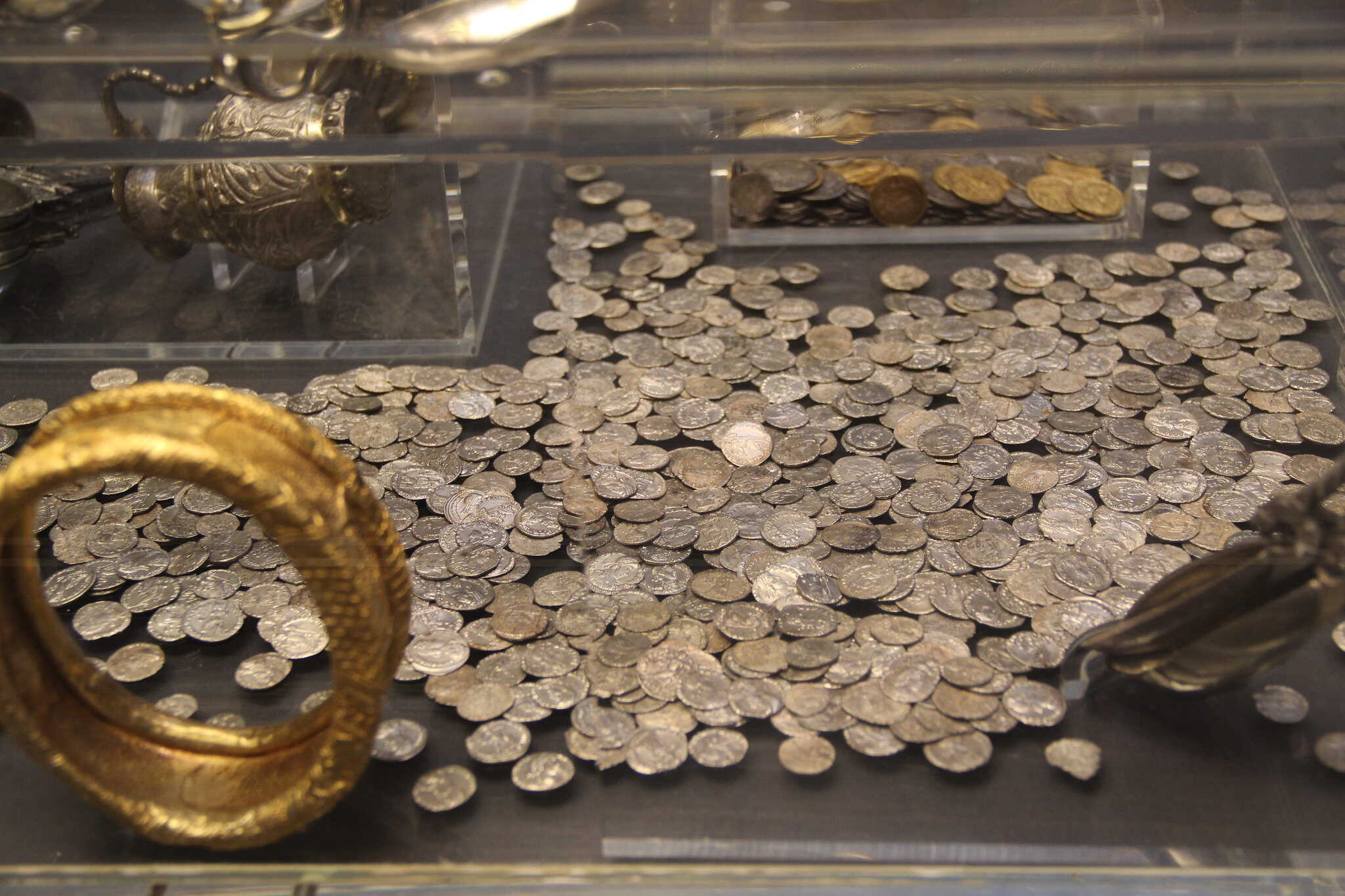
From the first clash of legions to the quiet fading of Roman rule, the story of Roman Britain is one of encounter and endurance. Across centuries, the island bore witness to war and diplomacy, conquest and coexistence.
It was a land where Latin met local tongues, where Roman gods shared space with native deities, and where mosaics were laid beside roundhouses. The people who lived here—merchants and farmers, soldiers and slaves, women and children—wove Roman customs into their own, creating a frontier society at once distinct and deeply Roman. Though the empire eventually retreated, its echoes remain in the roads, walls, names, and families that still shape Britain today.

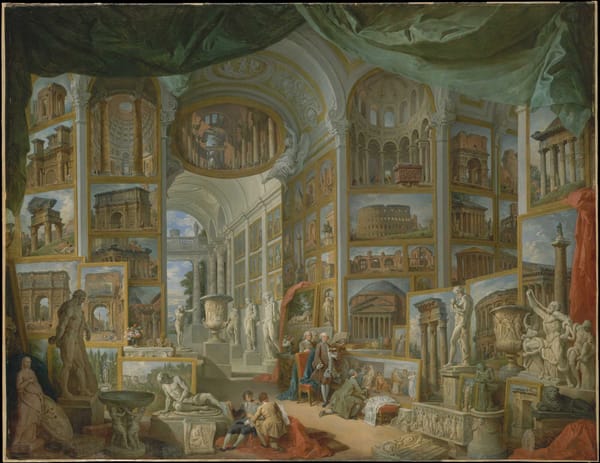

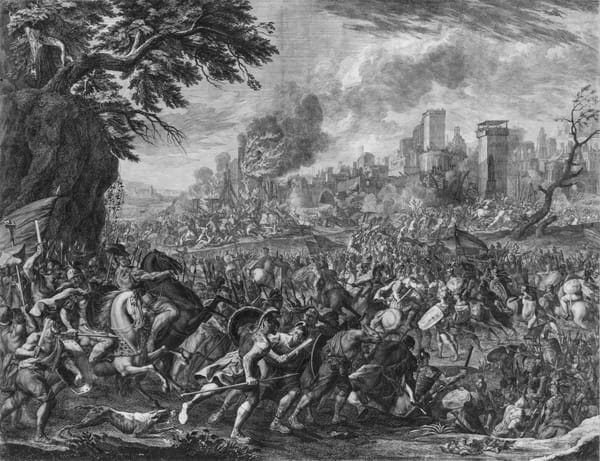
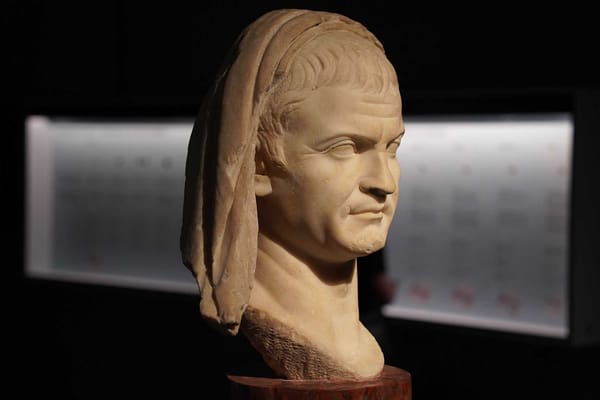
About the Roman Empire Times
See all the latest news for the Roman Empire, ancient Roman historical facts, anecdotes from Roman Times and stories from the Empire at romanempiretimes.com. Contact our newsroom to report an update or send your story, photos and videos. Follow RET on Google News, Flipboard and subscribe here to our daily email.
Follow the Roman Empire Times on social media: